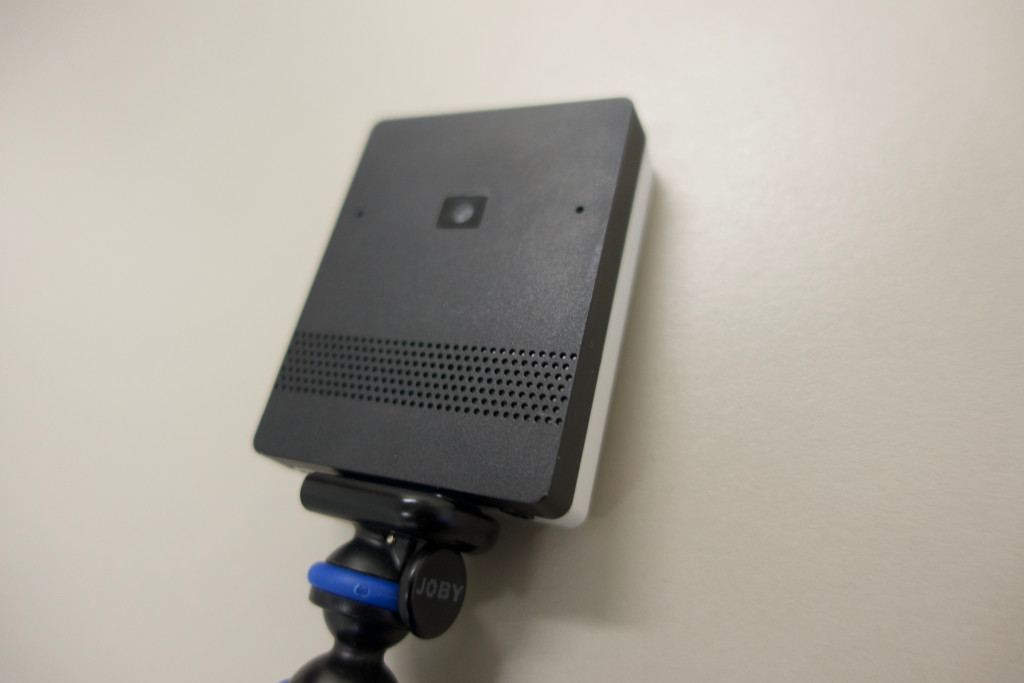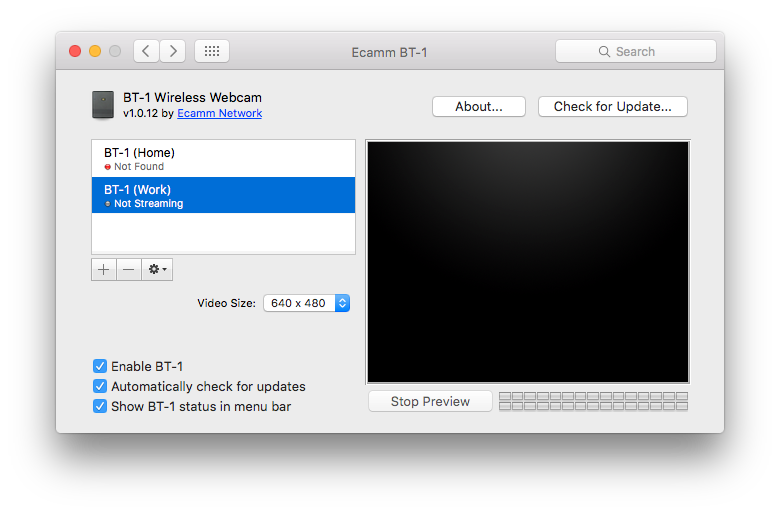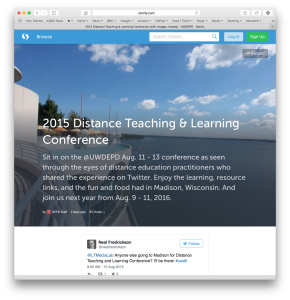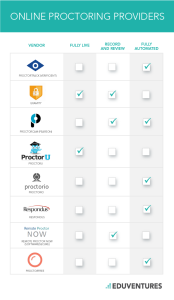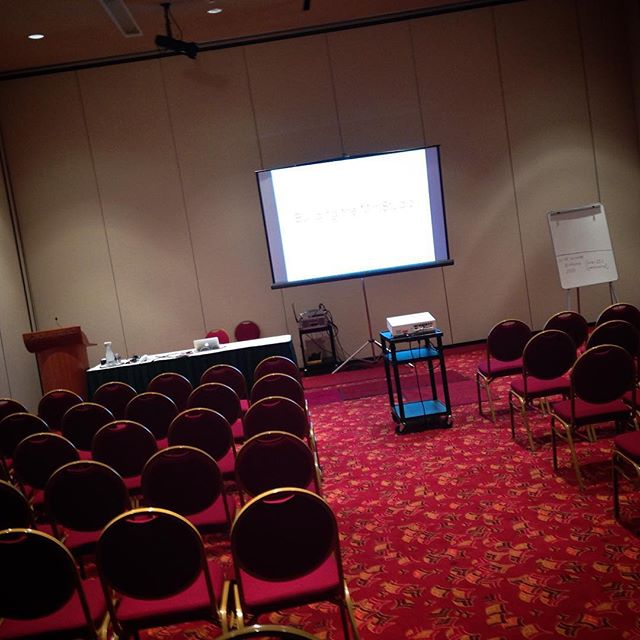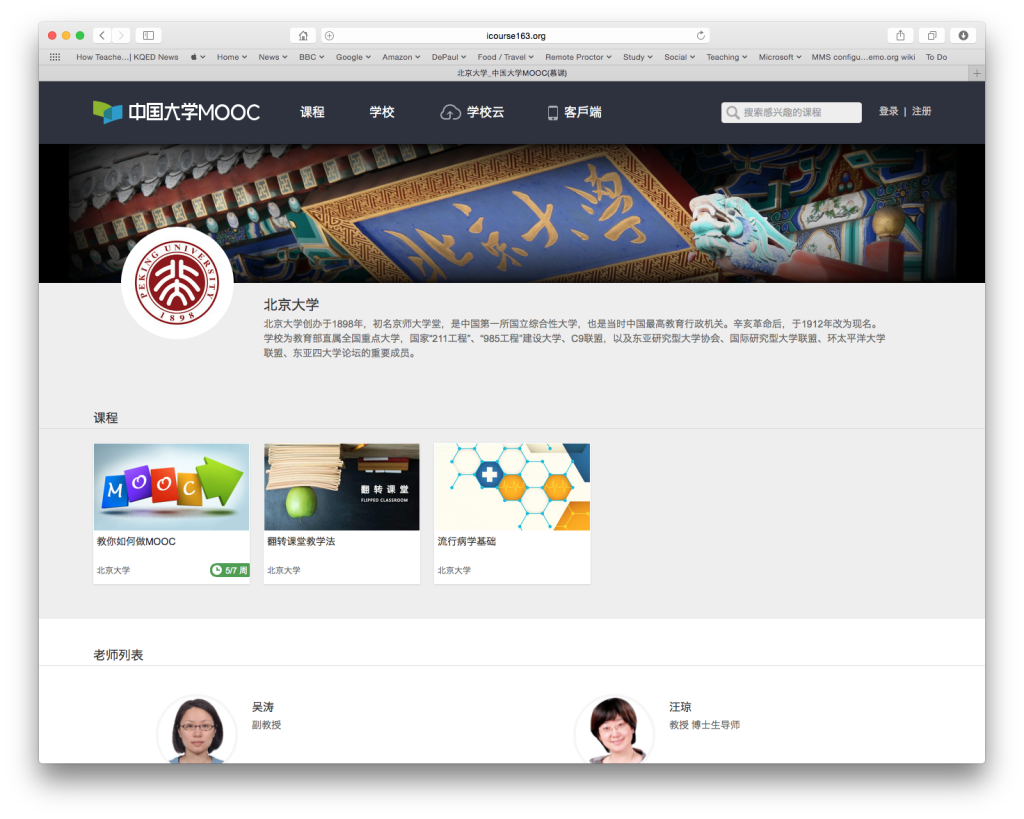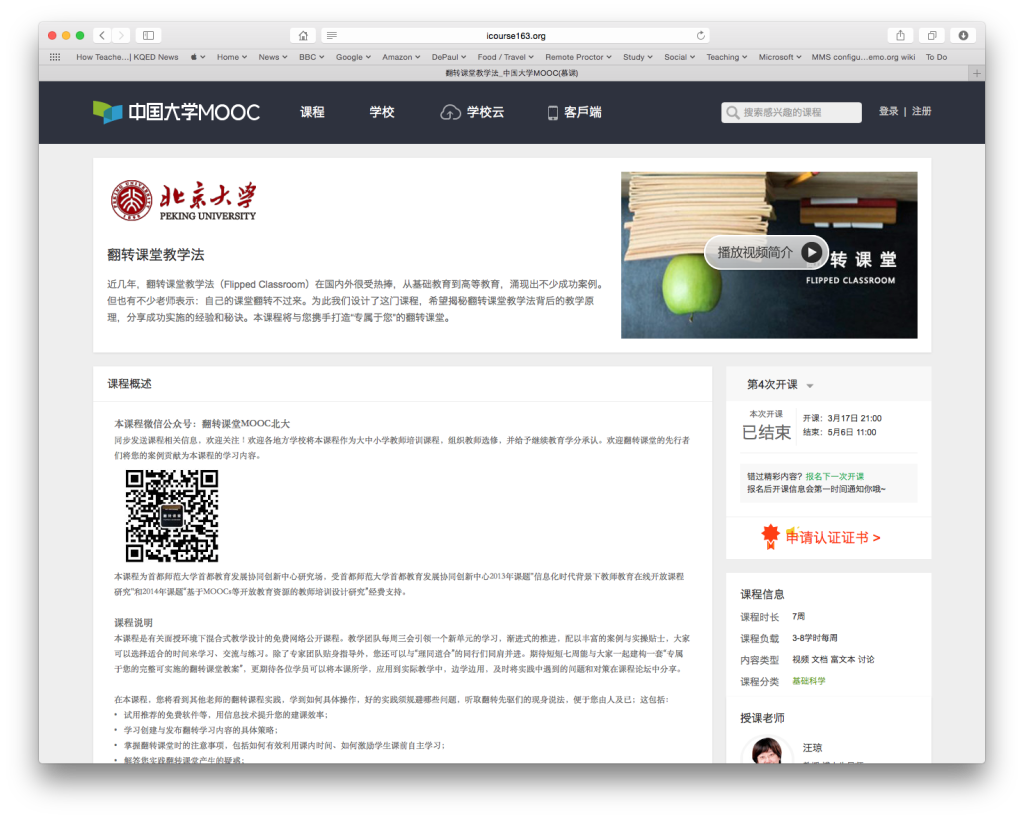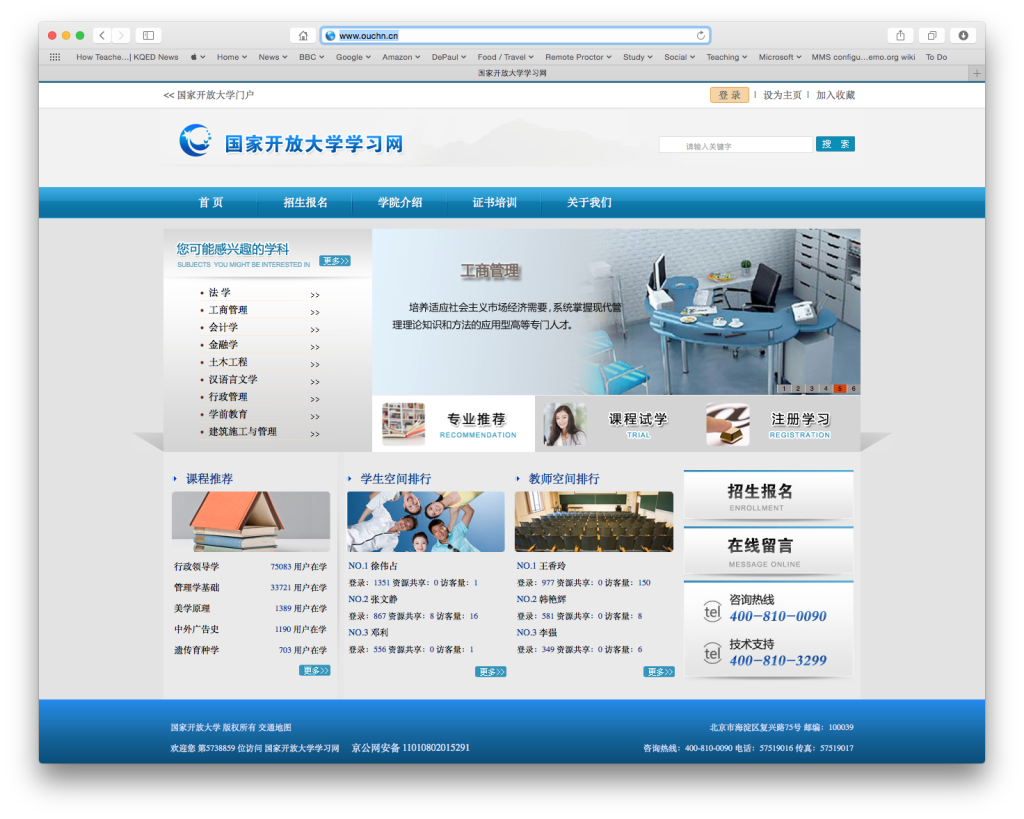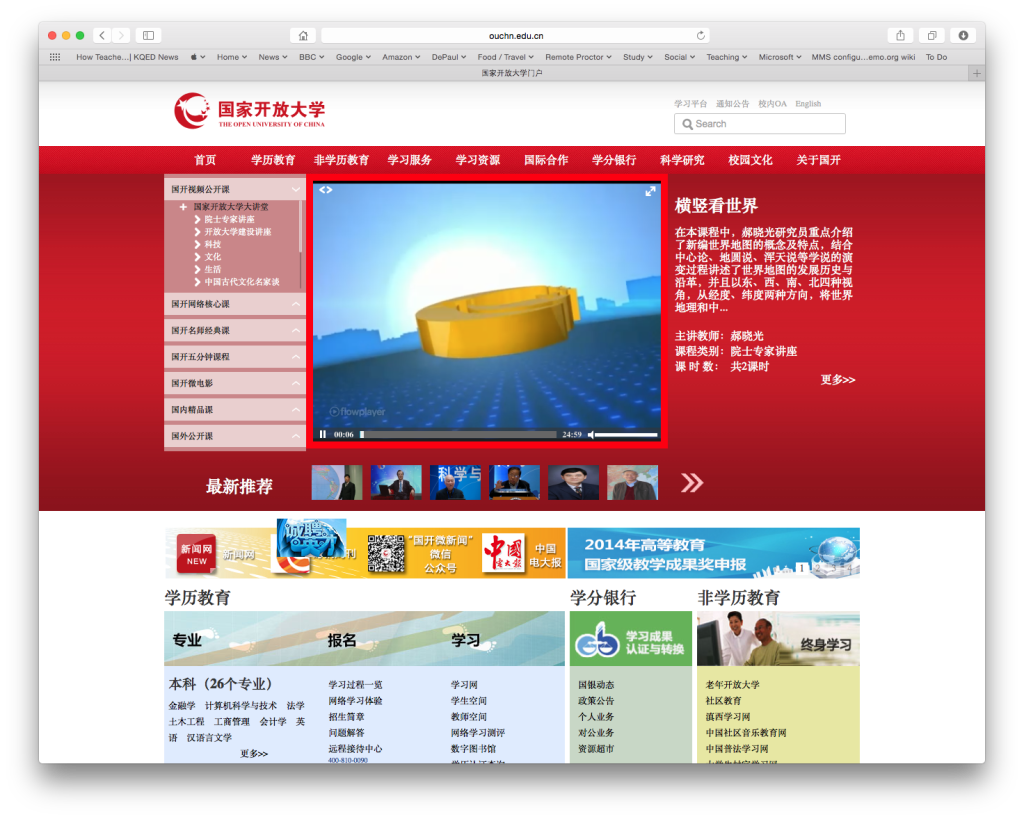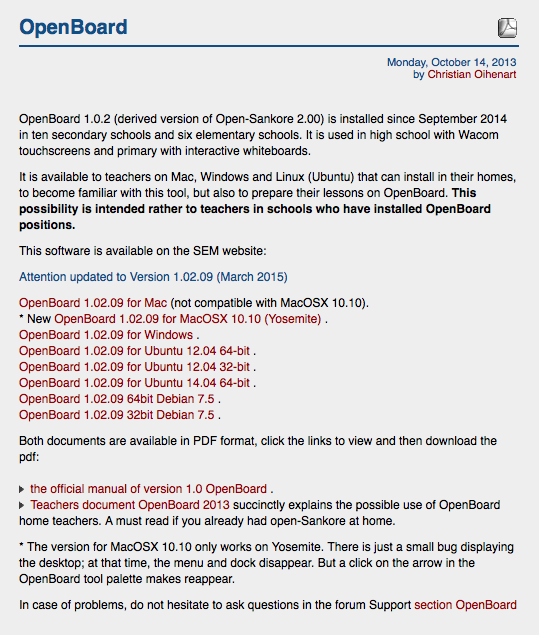
Great Wall of China
I was in China recently (first time!) showing Chinese teachers how online learning is conducted in the U.S. Before leaving for China, I diligently checked on what to pack. I made some good decisions. I made some bad decisions. This post hopefully helps others about to make that long journey to a fascinating country.
My style of presenting and teaching is to use a MacBook Air, recording myself with a BT-1 Bluetooth camera (positioned towards the back of the room) and ScreenFlow.
Clothes
I was in Beijing in June. Hot and humid. Definitely worth checking the weather before visiting. Chinese culture is not particularly bothered about formal attire, so no need to pack a business suite or dress shoes. For teaching in June, lightweight hot-weather clothing is the way to go:
- Plenty of short-sleeve shirts
- Semi-formal trousers (TravelSmith has a range designed for heat and humidity, or you can go Outlier)
- Performance trousers (for visits to all the tourist sites)
- One pair comfortable walking shoes. Go for something lightweight and breathable.
- Underwear
- Hat
- Umbrella (keeps off both the rain and sun)
- Packable rain-jacket
Technology
Chinese airport security is more restrictive than in the U.S., you may be able to bring something into China, but taking it back on the airplane may be more difficult. One of the most useful gadgets I had on the trip (HooToo TripMate Wireless N Portable Travel Router with 6000mAh Battery Charger) was confiscated as I was leaving Beijing Capital International Airport. The reason was that it had a battery that lacked “proper wording” (officially declared capacity). My understanding is you want to have less than 100 watt-hours, and for this to be clearly stated on the device.

Typical Chinese Electrical Outlet
Whilst teaching, I was in typical Chinese classroom. Projectors worked with either VGA or HDMI connections; so having adapters for both was a must (which is where the Cable Matters® Mini DisplayPort to HDMI/DVI/VGA Male to Female 3-in-1 Adapter comes in very useful). Internet speeds could be slower than what I was used to, and WiFi could be slower than a wired connection – this is where bringing my own router and Ethernet cable brought dividends.
Essential iPhone Apps

Explore Beijing Subway Map
Beijing’s Metro is fantastic (and rapidly expanding). New lines and stations are coming to service. This app helps you navigate, and has maps for each station

Express VPN
A VPN is required in China to access sites like Facebook, Instagram, Twitter and Google.

Learn Chinese
English is not commonly spoken in China. A phrasebook is essential.
Miscellaneous
